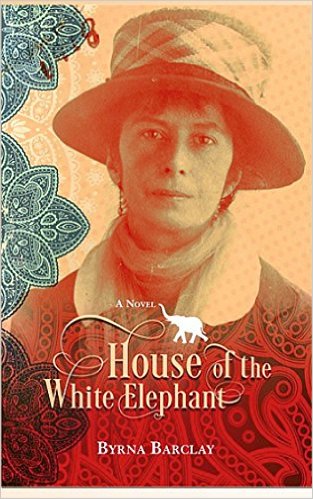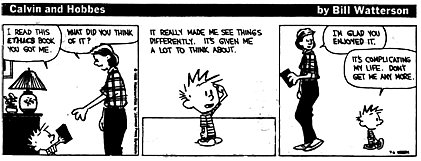 In Byrna Barclay’s most recent novel House of the White Elephant, the character Lewis Hutchinson says to his young daughter, Jesse Emma: “You cannot replace one person with another” (367). Yet, the compulsion to replace his first wife drives Lewis and, at first, it secures his posterity but, ultimately, alienates his children. Not only is Lewis impassioned about having an Elizabeth in his life, he is equally obsessed with compensating for his dark skin and questionable parentage. These compulsions are the metaphorical rivers that dominate the lives of the characters in the novel: at times, the rivers are life-giving and freeing, but mostly they are frozen rivers that keep the characters from moving on. In this historical novel, Barclay extends the river metaphor across continents and generations to reveal the steady-flowing influence of ancestry, history, and ethnicity on subsequent generations.
In Byrna Barclay’s most recent novel House of the White Elephant, the character Lewis Hutchinson says to his young daughter, Jesse Emma: “You cannot replace one person with another” (367). Yet, the compulsion to replace his first wife drives Lewis and, at first, it secures his posterity but, ultimately, alienates his children. Not only is Lewis impassioned about having an Elizabeth in his life, he is equally obsessed with compensating for his dark skin and questionable parentage. These compulsions are the metaphorical rivers that dominate the lives of the characters in the novel: at times, the rivers are life-giving and freeing, but mostly they are frozen rivers that keep the characters from moving on. In this historical novel, Barclay extends the river metaphor across continents and generations to reveal the steady-flowing influence of ancestry, history, and ethnicity on subsequent generations.
The opening line of the novel—“The ice on the river is breaking up”—establishes the river metaphor that flows throughout the novel. The river of this novel is not a literal river, not the Ganges, not the Thames, not the North Saskatchewan; it is the river of the human experience, whether in Bengal, India in the mid-19th Century, London, England in the late-19th Century, or Prince Albert, Canada in 1953. The river is memory and it is history and it is loss and it is all frozen under layers of illegitimacy, disgrace, and the forgotten. Yet, the narrator, Jesse Emma, plunges into this river for the sake of narrative. And she, like her father Lewis, is under a compulsion, but her compulsion is “to tell the tale as it must be told, finally” (15). And so Jesse Emma—in the beautiful prose that characterizes Barclay’s work—writes her father’s story.
During the height of Britain’s control in India, Lewis Hutchinson is born to a British woman, Helen Hutchinson, and an Indian male servant. Helen sacrifices her maternal desire, for she must agree never to see the child, to ensure that her son is granted the surname of Helen’s dead husband, the esteemed Captain Frederick William Hutchinson of the 17th Light Dragoons. Because of his mother’s selfless love, Lewis is given a definitive status within the rigid Indian and British class system. A chaplain deposits the child in the Company’s Orphanage where he receives British schooling and is granted a place in the Uncovenanted Civil Service, the inferior service for those without the means to purchase a commission in the Queen’s or Company’s Army. Lewis will spend his life trying to surmount barriers imposed on him because of “the loss of his birthright” (111).
Yet, this dark-skinned man has the exoticism of Othello. Elizabeth Vertannes (his first wife) confesses: “He didn’t just look different, with those startling black eyes and the goofy lank of unruly hair . . . When I discovered his mother’s circumstances my heart went out to him. And oh, the scars on my beloved’s back” (156). Later, Elizabeth says: “Lewis had told me the most imitate details of his horrid life in the orphanage—the poor diet and the beatings. How sad and sorry I was for him” (158). How reminiscent is their relationship to that of Desdemona and Othello, who says: “My story being done / She gave me for my pains a world of sighs. . . . She wished she had not heard it . . . She loved me for the dangers I had passed, / And I loved her that she did pity them” (1.3.160-70). Certainly Lewis and Elizabeth’s story is not the full story of Othello/Desdemona even if Elizabeth’s bigoted father is a Brabantio of sorts, but it is about an interracial marriage in a society built on white supremacy. There is no Iago in this narrative, but there is hatred and tragedy that, ultimately, leads to Elizabeth’s murderous death.
Elizabeth Vertannes gets caught in the upheaval that breaks out with the 1867 Indian Mutiny. The author traces the history of the Mutiny through its inciting events and into its violent uprisings. Barclay describes the army’s route to Chittagong: British officers in umbrella-covered baskets strapped to the sides of camels; mahouts atop elephants, lugging the cannons; the horde of servants and loose women trailing the elephants; and a small contingent of soldiers bringing up the rear. The author paints this colouful, lively journey with the same vividness she brings to the Indian bazaar—the elephants and sacred cows and green vegetables and drums and acrobats and snake charmers and incense—beating, chanting, pungent, musty, copper, red—a conflation of images. It is through Barclay’s poetic imagination that the reader sees and hears and smells each of the dramatic scenes created in the novel.
The travelling army camps near Chittagong; Mothy—Lewis’s orphanage friend and company drummer—hears a song: “Swing, swing, Rani Raja, till the flowering of the rose” (213). Barclay draws from her poetic impulses to build up this poignant scene: two children, doubled-up face-to-face on a wooden swing, back and forth to the lines of the song. The children swing and the singer sings and with this song continuing in the background, Mothy’s attention shifts to another scene: European men and women and children, fettered, bayonets driving them forward and then a fire being lit and breaking out and setting aflame many of these prisoners. And to the lines Swing, swing, Rani Raja, elephants are ordered first to trample the feringhee (the white foreigners) and then to grab the bodies in their trunks and swing them around and around. If Mothy looks one way, there is the swinging and hurling of victimized bodies; if he looks the other way, there is the swinging of happy children. And the cadence of the song sets the rhythm of this poignant account of a piece of history that Mothy confesses—again and again–that he will always remember. The juxtaposition of the children swinging with the massacre is just one instance of Barclay calling on the reader to witness such horrific events and to understand such evil against an innocent and alluring Indian culture—India, where the main characters long to return.
House of the White Elephant is not just a poetic masterpiece, it is a riveting narrative that opens up like the river’s breaking spring ice with tumultuous emotion and gushes of a messy history. The narrative flows rapidly at times and, other times, it moves with a slow, steady current, only to change into white water rapids that pull the characters into tragedy and loss and pain.
Byrna Barclay has outdone herself in this beautiful and honest rendering of a historical period. This is not a political book; Barclay tells the story from a number of perspectives. And, while the narrative follows history, the characters’ emotions and experiences are not confined to one time and a place; like the waters of a river that move across time and space, these characters are universal—characters who have ever lost a spouse or felt the shame of family line or had to come to terms with memory and self.

 In Byrna Barclay’s most recent novel House of the White Elephant, the character Lewis Hutchinson says to his young daughter, Jesse Emma: “You cannot replace one person with another” (367). Yet, the compulsion to replace his first wife drives Lewis and, at first, it secures his posterity but, ultimately, alienates his children. Not only is Lewis impassioned about having an Elizabeth in his life, he is equally obsessed with compensating for his dark skin and questionable parentage. These compulsions are the metaphorical rivers that dominate the lives of the characters in the novel: at times, the rivers are life-giving and freeing, but mostly they are frozen rivers that keep the characters from moving on. In this historical novel, Barclay extends the river metaphor across continents and generations to reveal the steady-flowing influence of ancestry, history, and ethnicity on subsequent generations.
In Byrna Barclay’s most recent novel House of the White Elephant, the character Lewis Hutchinson says to his young daughter, Jesse Emma: “You cannot replace one person with another” (367). Yet, the compulsion to replace his first wife drives Lewis and, at first, it secures his posterity but, ultimately, alienates his children. Not only is Lewis impassioned about having an Elizabeth in his life, he is equally obsessed with compensating for his dark skin and questionable parentage. These compulsions are the metaphorical rivers that dominate the lives of the characters in the novel: at times, the rivers are life-giving and freeing, but mostly they are frozen rivers that keep the characters from moving on. In this historical novel, Barclay extends the river metaphor across continents and generations to reveal the steady-flowing influence of ancestry, history, and ethnicity on subsequent generations.








